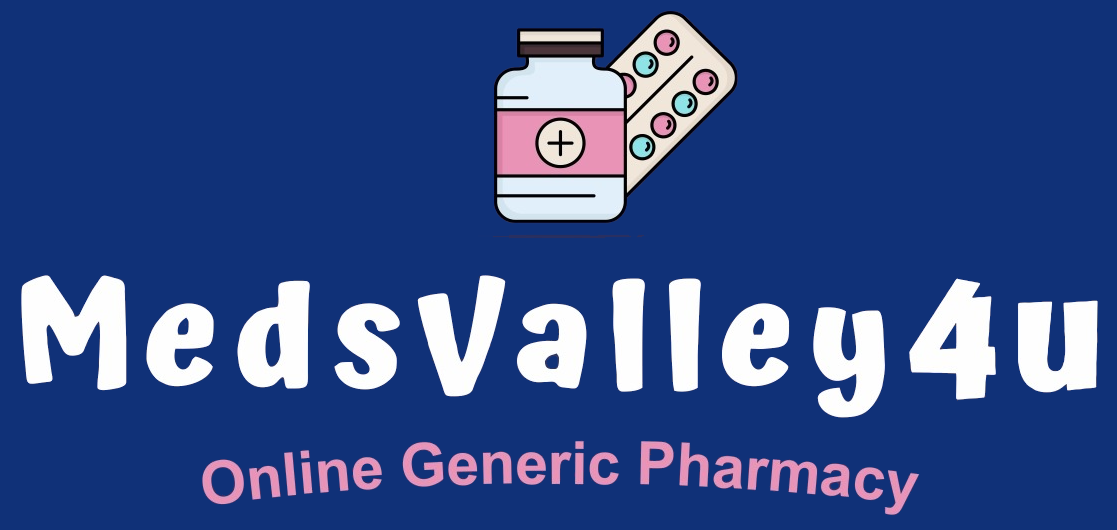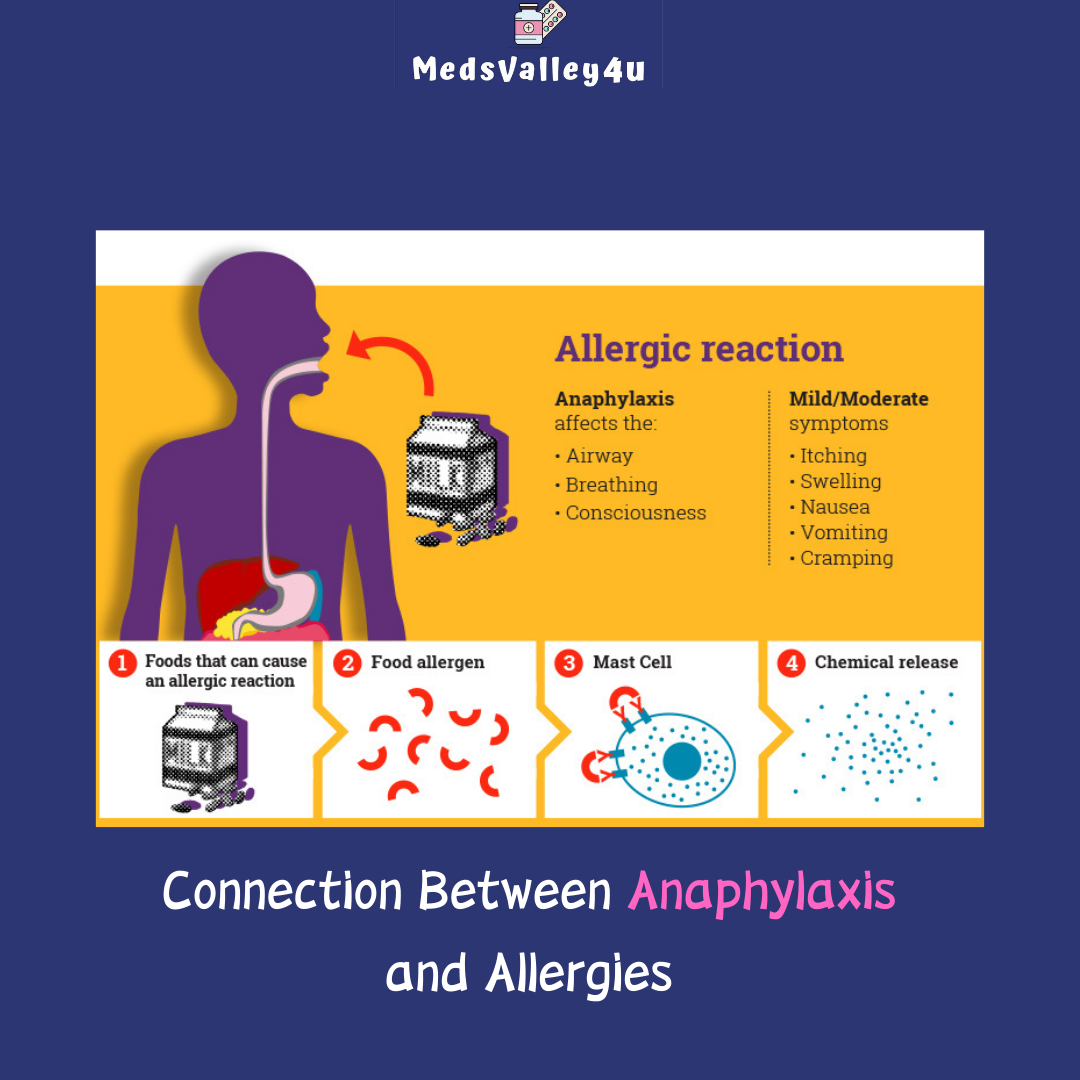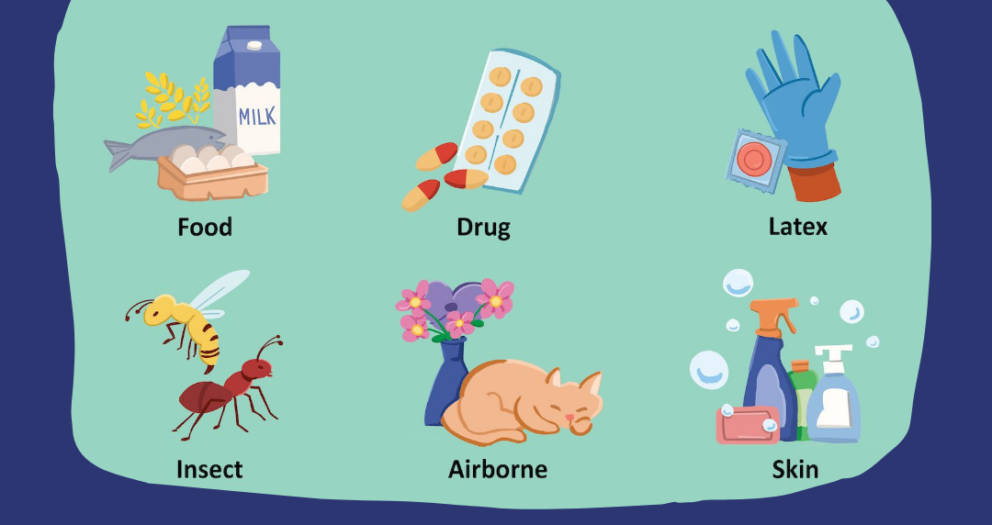Allergies are a common condition affecting millions of people worldwide, characterized by an abnormal immune response to normally harmless substances such as pollen, food, or animal dander. While most allergic reactions manifest with mild to moderate symptoms like sneezing, itching, or swelling, some individuals experience a severe, potentially life-threatening reaction known as anaphylaxis. Anaphylaxis is the most extreme form of an allergic response and requires immediate medical intervention. Understanding the connection between allergies and anaphylaxis is essential for managing risks and ensuring timely treatment.
What is Anaphylaxis?
Anaphylaxis is a severe, rapid-onset allergic reaction that can affect multiple organ systems in the body. Unlike typical allergic reactions, anaphylaxis can escalate within minutes, causing a range of symptoms, from mild to severe, that can quickly become life-threatening. This reaction occurs when the immune system releases an excessive amount of chemicals like histamines and cytokines, triggering widespread inflammation and tissue damage.
The hallmark symptoms of anaphylaxis include:
- Difficulty breathing or shortness of breath
- Swelling of the face, lips, tongue, and throat (angioedema)
- Severe drop in blood pressure (anaphylactic shock)
- Hives or widespread skin rash
- Nausea, vomiting, or diarrhea
- Dizziness or fainting
The most dangerous aspect of anaphylaxis is its unpredictability and rapid progression. If left untreated, it can result in loss of consciousness, respiratory failure, or cardiac arrest. As such, anaphylaxis is a medical emergency requiring immediate administration of epinephrine, often delivered via an auto-injector (EpiPen), to reverse the reaction and stabilize the individual’s condition.
How Allergies Lead to Anaphylaxis
The connection between allergies and anaphylaxis lies in the immune system’s overreaction to an allergen. Normally, the immune system protects the body by identifying and neutralizing harmful substances like bacteria and viruses. However, in individuals with allergies, the immune system mistakenly identifies harmless substances, known as allergens, as dangerous invaders. This leads to an overproduction of immunoglobulin E (IgE) antibodies, which trigger the release of inflammatory chemicals such as histamine when exposed to the allergen.
While most allergic reactions result in localized symptoms such as sneezing or itching, in some people, the immune system’s response is exaggerated, leading to the widespread release of these chemicals. This overreaction results in the rapid onset of anaphylaxis, which can affect the respiratory system, cardiovascular system, skin, and gastrointestinal tract.
Several types of allergies are commonly associated with anaphylaxis, including:
1. Food Allergies
Food allergies are one of the leading causes of anaphylaxis. Common foods that trigger severe allergic reactions include:
- Peanuts and tree nuts (e.g., almonds, walnuts, cashews)
- Shellfish and other seafood (e.g., shrimp, crab, lobster)
- Dairy products (e.g., milk, cheese)
- Eggs
- Wheat
- Soy
In people with food allergies, even trace amounts of the allergen can trigger a severe reaction. For example, cross-contamination during food preparation or consuming food labeled incorrectly can lead to unintentional exposure and anaphylaxis.
2. Insect Sting Allergies
Another common cause of anaphylaxis is insect stings from venomous insects such as:
- Bees
- Wasps
- Hornets
- Fire ants
For individuals with insect sting allergies, a single sting can lead to a severe allergic reaction, including difficulty breathing, rapid swelling, and anaphylactic shock. The venom from these insects triggers a release of IgE antibodies in sensitized individuals, leading to systemic symptoms that may rapidly become life-threatening.
3. Drug Allergies
Certain medications are known to cause allergic reactions that can lead to anaphylaxis in some people. Common drugs that may trigger anaphylaxis include:
- Penicillin and other antibiotics
- Aspirin and nonsteroidal anti-inflammatory drugs (NSAIDs)
- Anesthesia drugs
- Chemotherapy medications
Drug-induced anaphylaxis is unpredictable, as the reaction can occur the first time the medication is taken or after several doses.
4. Latex Allergies
Latex, a natural rubber commonly used in medical gloves, balloons, and certain medical devices, can cause anaphylaxis in people with severe latex allergies. Contact with latex triggers an immune response in these individuals, leading to swelling, difficulty breathing, and other symptoms of anaphylaxis.
5. Exercise-Induced Anaphylaxis
In rare cases, physical activity can trigger anaphylaxis, particularly when it occurs after consuming certain foods. This is known as exercise-induced anaphylaxis. The exact mechanism is not fully understood, but it is believed that certain foods combined with physical exertion cause the immune system to overreact, leading to severe allergic symptoms.
Recognizing the Signs of Anaphylaxis
Early recognition of anaphylaxis symptoms is crucial for preventing complications and ensuring timely treatment. Symptoms typically appear within minutes to an hour after exposure to the allergen, though delayed reactions can also occur. Common signs of anaphylaxis include:
- Swelling of the lips, tongue, or throat: This can lead to difficulty swallowing or breathing, a dangerous symptom that requires immediate intervention.
- Hives or itchy rash: A widespread rash or red welts may appear on the skin, signaling an allergic reaction.
- Wheezing or shortness of breath: Anaphylaxis often affects the respiratory system, leading to difficulty breathing, wheezing, or a feeling of tightness in the chest.
- Dizziness or fainting: A sudden drop in blood pressure, known as anaphylactic shock, can cause dizziness, fainting, or confusion. This is a life-threatening symptom that requires immediate emergency care.
- Gastrointestinal distress: Nausea, vomiting, or diarrhea may accompany other symptoms, particularly in cases of food-induced anaphylaxis.
Treatment for Anaphylaxis
The first-line treatment for anaphylaxis is epinephrine (adrenaline), which should be administered immediately using an auto-injector. Epinephrine works by constricting blood vessels, relaxing the muscles in the airways, and reducing the immune system’s inflammatory response. For individuals with known severe allergies, carrying an epinephrine auto-injector at all times is essential.
Once epinephrine is administered, it is important to seek emergency medical care, even if symptoms improve. Anaphylaxis can sometimes lead to a biphasic reaction, where symptoms return hours after the initial exposure, necessitating further medical treatment.
In addition to epinephrine, the following treatments may be administered by healthcare professionals in a hospital setting:
- Oxygen therapy to assist with breathing
- Intravenous (IV) fluids to stabilize blood pressure
- Antihistamines to help relieve itching, hives, and other allergic symptoms
- Corticosteroids to reduce inflammation and prevent delayed or prolonged reactions
Preventing Anaphylaxis
For individuals at risk of anaphylaxis, prevention is key to avoiding life-threatening reactions. The following strategies can help minimize the risk:
- Identify and avoid allergens: People with allergies should work with an allergist to identify specific triggers and avoid exposure whenever possible. This may involve reading food labels carefully, asking about ingredients at restaurants, and carrying epinephrine at all times.
- Wear a medical alert bracelet: Individuals with severe allergies should wear a medical alert bracelet or necklace that indicates their condition. This information can be critical for first responders in an emergency.
- Desensitization (Allergy Immunotherapy): For some allergies, such as insect stings or certain food allergies, desensitization treatments may be available. This process involves exposing the individual to small, controlled amounts of the allergen over time to reduce sensitivity and lower the risk of anaphylaxis.
End of Post:-
The connection between allergies and anaphylaxis highlights the importance of understanding, recognizing, and managing severe allergic reactions. Anaphylaxis is a life-threatening condition that can arise from common allergens like food, insect stings, medications, and even exercise. Immediate treatment with epinephrine is crucial for preventing complications, and individuals with known allergies must take steps to avoid triggers and be prepared to respond quickly in case of a reaction. With proper management and awareness, the risks associated with anaphylaxis can be minimized, allowing those affected to lead safer, healthier lives.




Write a comment
Your email address will not be published. All fields are required